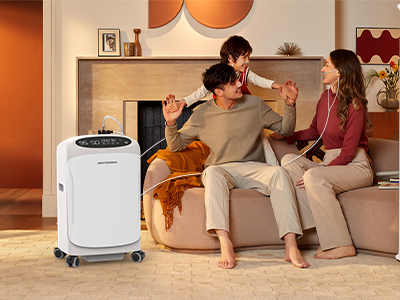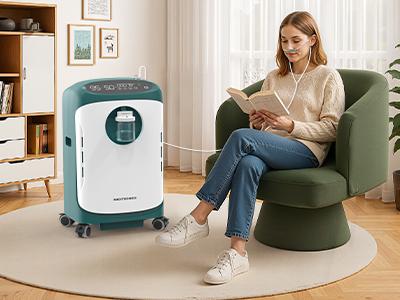04 Aug 2025
Breathing is the one thing we all do without thinking—until we can’t. That’s where oxygen therapy swoops in like a quiet, invisible hero. From fragile newborn lungs to seasoned senior airways, supplemental oxygen can restore vitality, prevent complications, and keep life moving—one well-oxygenated breath at a time.
But oxygen therapy isn’t one-size-fits-all. Different ages come with different challenges, equipment tweaks, and—let’s be honest—levels of cooperation. Here’s how oxygen therapy supports every generation, from tiny humans to wise elders.

Oxygen Therapy for Infants
Babies: adorable, squishy, and occasionally equipped with lungs that need a little backup. Preemies and infants with conditions such as bronchopulmonary dysplasia often need supplemental oxygen to help them catch up.
What It Looks Like:
Oxygen hoods or tents – creating tiny oxygen-rich bubbles that feel like luxury spas for baby lungs.
Nasal cannulas – delicate, soft, and small enough for button noses.
Constant monitoring – pulse oximeters ensure those tiny oxygen levels stay in the green zone.
The goal isn’t just breathing—it’s brain growth, healthy weight gain, and the kind of energy that fuels late-night giggles (and parental sleep deprivation).
Oxygen Therapy for Children
As kids grow, so does their ability to protest. Enter the challenge of pediatric oxygen therapy: combining medical necessity with snack-time negotiations and superhero-level persuasion skills.
Special Considerations:
Active lifestyles: Tubing management during impromptu hallway races is a must.
Customization: Dinosaur masks, rainbow tubing, and a machine nicknamed “Oxy McBreathyface” can turn fear into fascination.
School coordination: Teachers and nurses become part of the oxygen support squad.
Children adapt surprisingly fast when oxygen therapy is woven into daily life—bonus points if it comes with stickers or extra bedtime stories.

Oxygen Therapy for Teens
Teenagers: simultaneously invincible and allergic to anything that looks uncool. Oxygen therapy at this stage becomes less about parental management and more about autonomy.
The Focus:
Discretion: Portable concentrators that don’t scream “medical device” can be a social lifesaver.
Education: Explaining why oxygen therapy matters helps teens take ownership of their health.
Support: Peer groups or online communities normalize the experience and reduce “I’m the only one” syndrome.
When teens are trusted to participate in their own care, oxygen therapy becomes less of a burden and more of a tool for independence.
Oxygen Therapy for Adults
Adulthood brings responsibilities, schedules, and an uncanny ability to ignore symptoms until they become impossible to avoid. For adults, oxygen therapy often arrives as part of chronic conditions like COPD, pulmonary fibrosis, or post-surgical recovery.
Key Strategies:
Lifestyle integration: Quiet concentrators for home use, portable units for the office, and tubing long enough to chase after caffeinated toddlers.
Efficiency: Adults appreciate routines—scheduled maintenance, organized supply storage, and apps that track oxygen usage.
Balance: Learning to pace activities, manage exertion, and use oxygen proactively rather than reactively.
For adults, oxygen therapy isn’t just medical—it’s about reclaiming energy and quality of life.
Oxygen Therapy for Seniors
By the time oxygen therapy enters the golden years, it’s all about preserving comfort, independence, and dignity. Seniors often juggle multiple conditions, but supplemental oxygen can be the difference between daily struggle and easy breathing.
Priorities:
Safety: Fall-proof tubing and equipment positioned to prevent accidental unplugging.
Simplicity: Machines with intuitive controls (and big buttons for bonus points).
Support systems: Family, caregivers, and home health services keep therapy consistent and effective.
Oxygen therapy at this stage isn’t just clinical—it’s compassionate. It helps seniors enjoy conversations, short walks, and the priceless luxury of breathing without effort.
Universal Truths About Oxygen Therapy
Despite age-specific quirks, some principles remain the same:
Clean equipment is non-negotiable.
Regular monitoring prevents emergencies.
Education empowers patients and families.
Comfort matters as much as compliance.
Breathing should never feel like a chore, no matter how many candles you’ve blown out in your lifetime.
Keywords: oxygen therapy
Originally published 04 Aug 2025, updated 04 Aug 2025.